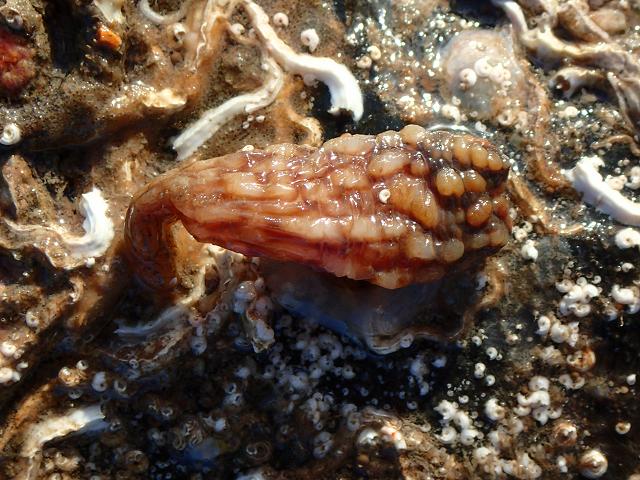
APHOTOMARINE
An educational resource dedicated mainly to the photography
and diversity of marine life that can be found in coastal waters
and intertidal areas of Great Britain and Ireland by David Fenwick.

Styela clava Herdman, 1881 - Leathery or Folded sea squirt - a non-native invasive species (Tunicate images)
Scroll down and rollover titles to change screen image or click on title to view image.
Leathery sea squirt
Styela clava
- under rock on lowershore 1
Styela clava
- under rock on lowershore 1
Specimen above was found under a rock on the lowershore in front of Newlyn Green, Newlyn, Cornwall, 12.11.18.
Leathery sea squirt
Styela clava
- in container 1
Leathery sea squirt
Styela clava
- siphon 1
Leathery sea squirt
Styela clava
- siphon 2
Leathery sea squirt
Styela clava
- siphon 3
Leathery sea squirt
Styela clava
- siphon 4
Leathery sea squirt
Styela clava
- out of water 1
Leathery sea squirt
Styela clava
- out of water 2
Specimens above were all found growing on pontoons at Newlyn Marina, Newlyn, Cornwall, over a number of years.
Leathery sea squirt
Styela clava
- on stone 1
Leathery sea squirt
Styela clava
- close-up 1
Leathery sea squirt
Styela clava
- close-up 2
Leathery sea squirt
Styela clava
- close-up 3
Leathery sea squirt
Styela clava
- on stone 2
Leathery sea squirt
Styela clava
- close-up 4
Leathery sea squirt
Styela clava
- close-up 5
Leathery sea squirt
Styela clava
- close-up 6
Animals found at extreme low tides in river estaries and sheltered parts of the coast. May also be accidentally caught on rod and line when fishing. Images taken at Batten Bay, Plymouth, Devon; River Tamar, Saltash, Cornwall; and on the River Fal at Loe Beach, Feock, Cornwall.
Scientific and European Names:
Styela clava, Leathery Sea Squirt, Rough Sea Squirt, Folded Sea Squirt, Chwistrell for arw, Japanse Zakpijp, Knotszakpijp, Ascidie plissee, Falten Ascidie.

The main objective of this website is in furthering environmental awareness and education through the medium of photography. To increase awareness and access to the wildlife of the region and help
people find and identify it. Sometimes the difference between species is obvious but many species can only be determined by observing microscopic characteristics that are specific to any one species.